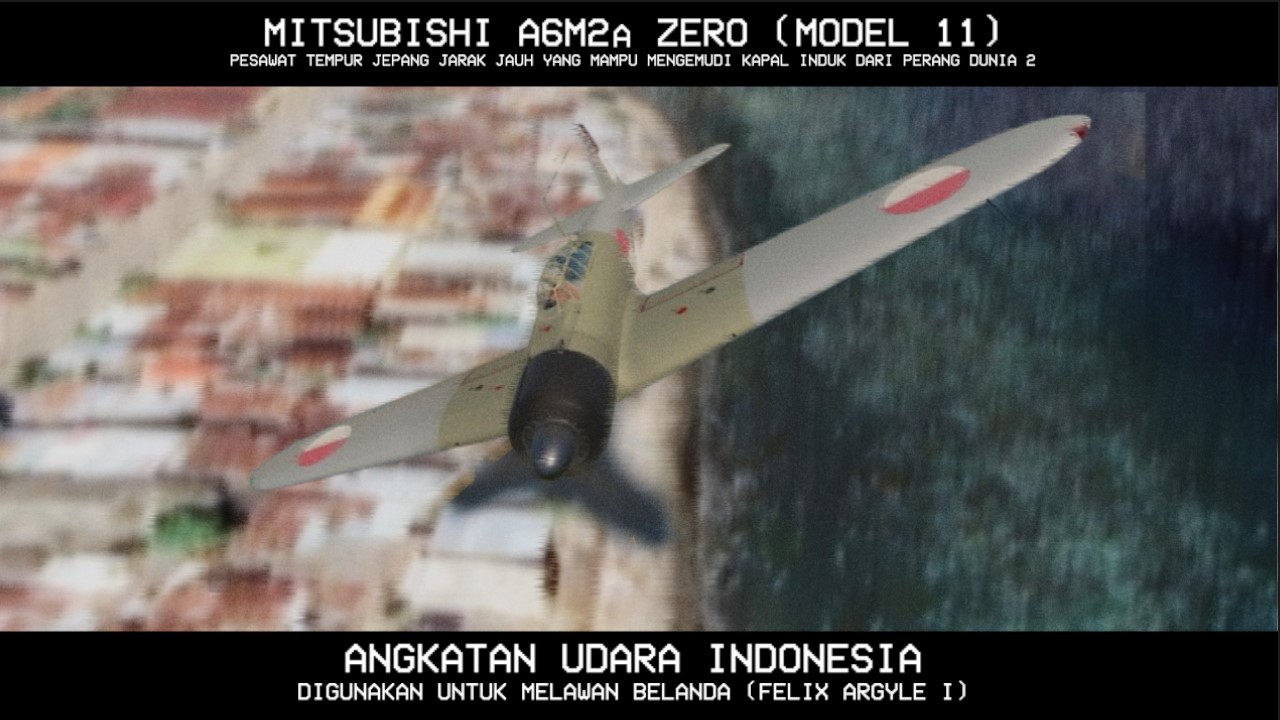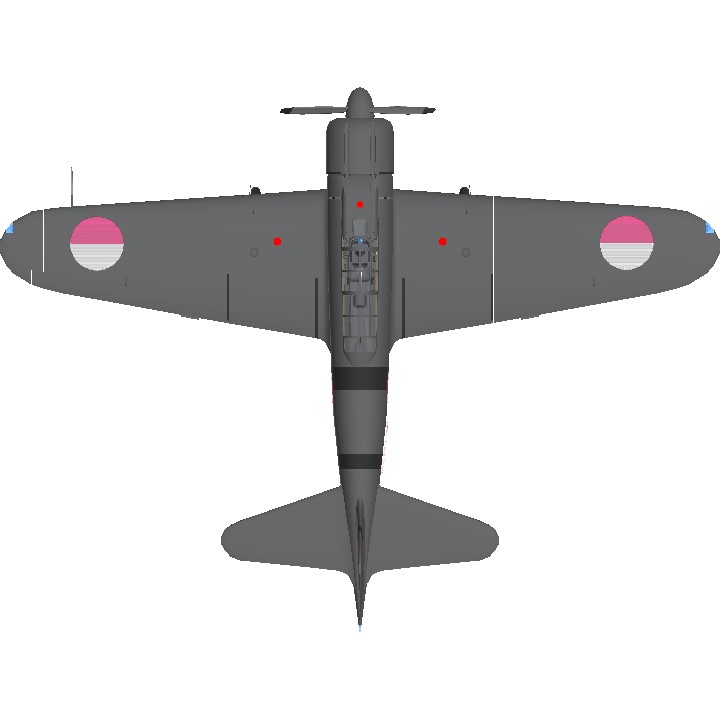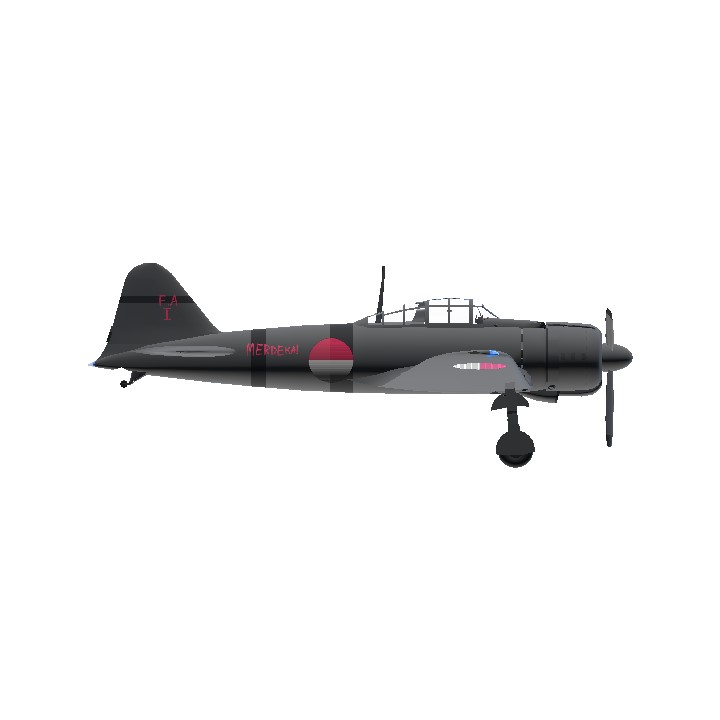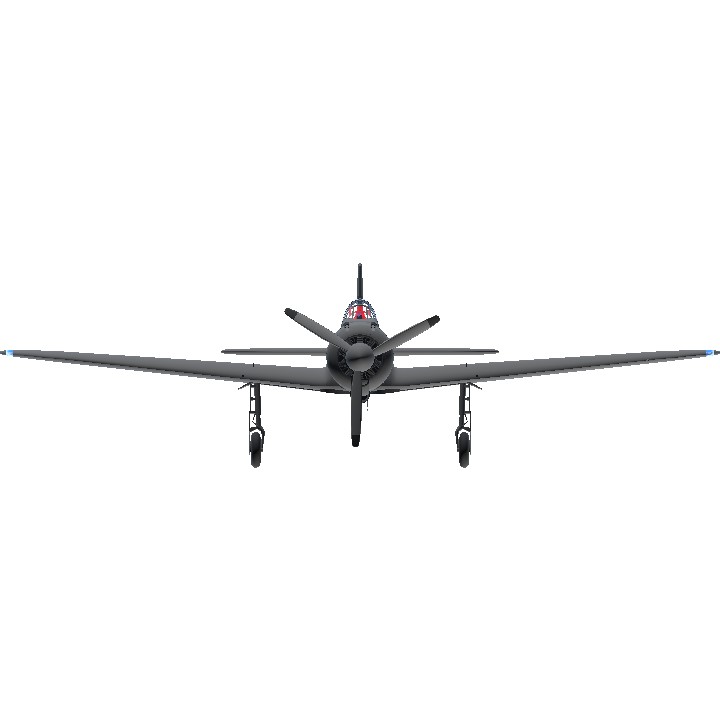So, what if you turned DrMinh's...
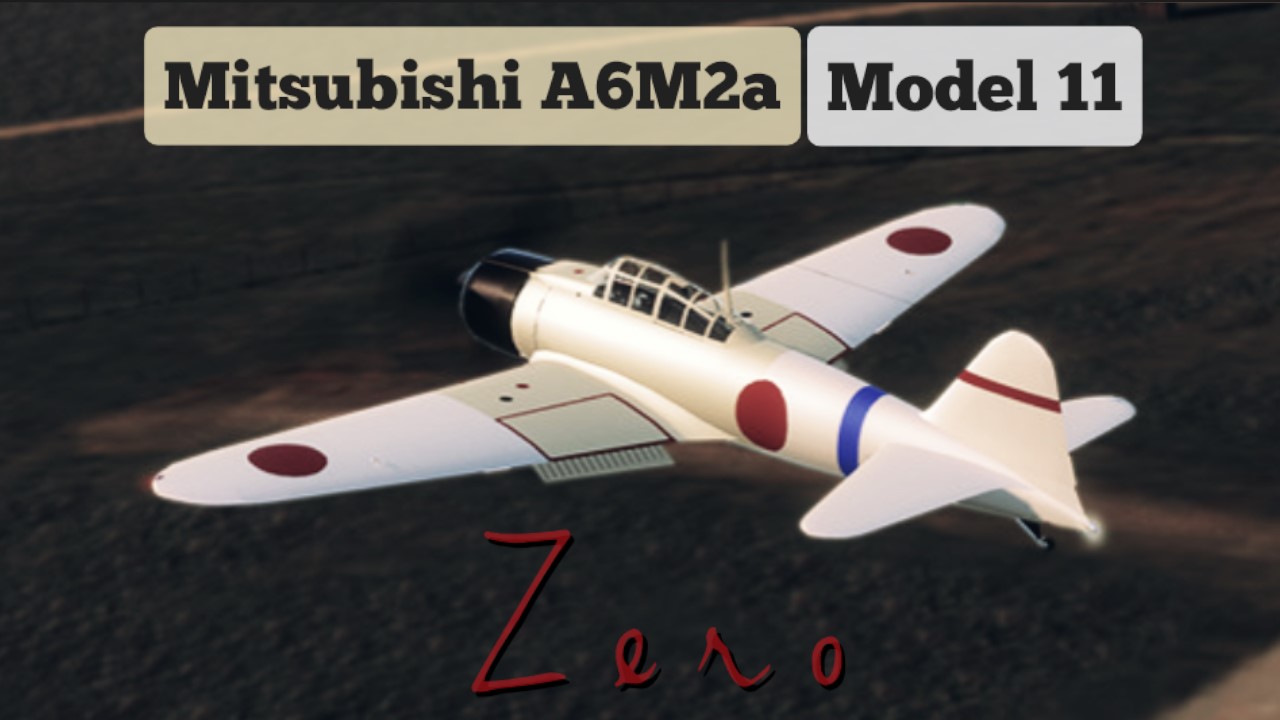
...into an Indonesian Air Force aircraft?
Some changes to this aircraft as follows:
- Replaced Japanese roundels (Hinomaru) into an early Indonesian Air Force roundel
- Repainted the aircraft's rudder and the landing gear cover
- Small paint changes to the aircraft's fuselage (vertical stabilizer and tail)
The Mitsubishi A6M "Zero" is a long-range carrier-capable fighter aircraft formerly manufactured by Mitsubishi Aircraft Company, a part of Mitsubishi Heavy Industries. It was operated by the Imperial Japanese Navy (IJN) from 1940 to 1945. The A6M was designated as the Mitsubishi Navy Type 0 carrier fighter (Rei-shiki-kanjo-sentoki), or the Mitsubishi A6M Rei-sen. The A6M was usually referred to by its pilots as the Reisen (Zero fighter), "0" being the last digit of the imperial year 2600 (1940) when it entered service with the IJN. The official Allied reporting name was "Zeke", although the name "Zero" was used more commonly.
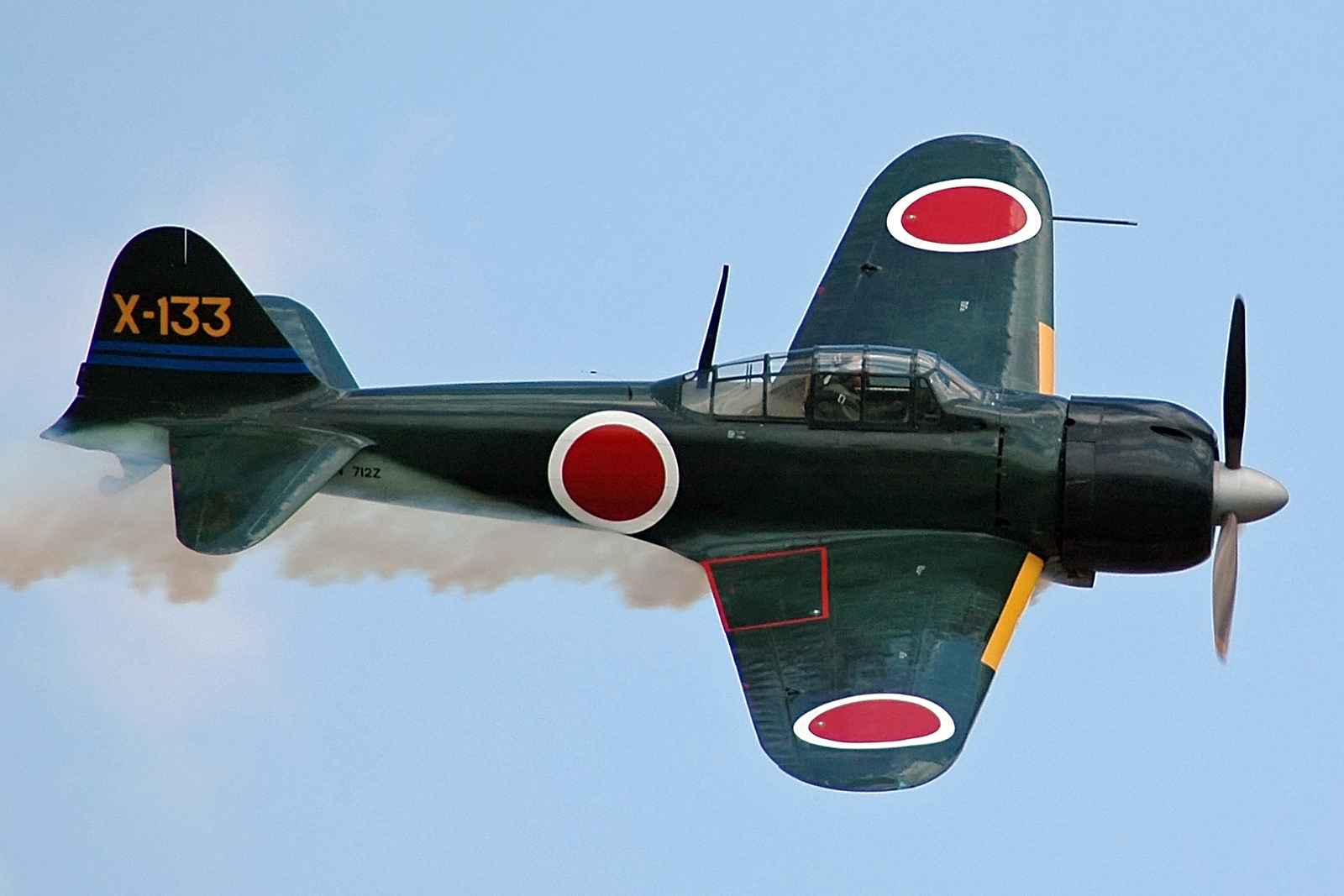
A6M3 Model 22 N712Z, operated by the Commemorative Air Force So Cal Wing
The Zero is considered to have been the most capable carrier-based fighter in the world when it was introduced early in World War II, combining excellent maneuverability and very long range. The Imperial Japanese Navy Air Service also frequently used it as a land-based fighter.
In early combat operations, the Zero gained a reputation as a dogfighter, achieving an outstanding kill ratio of 12 to 1, but by mid-1942 a combination of new tactics and the introduction of better equipment enabled Allied pilots to engage the Zero on generally equal terms. By 1943, the Zero was less effective against newer Allied fighters. The Zero lacked hydraulic boosting for its ailerons and rudder, rendering it difficult to maneuver at high speeds. Lack of self-sealing fuel tanks also made it more vulnerable than its contemporaries. By 1944, the A6M had fallen behind Allied fighters in durability and speed and was regarded as outdated. However, as design delays and production difficulties hampered the introduction of newer Japanese aircraft models, the Zero continued to serve in a front-line role until the end of the war in the Pacific. During the final phases, it was also adapted for use in kamikaze operations. Japan produced more Zeros than any other model of combat aircraft during the war.
Use by Indonesia
In 1945, Indonesian pro-independence guerrillas captured a small number of A6M aircraft at numerous Japanese air bases, including Bugis Air Base in Malang (repatriated 18 September 1945). Most aircraft were destroyed in military conflicts between the newly proclaimed Republic of Indonesia and the Netherlands, during the Indonesian National Revolution of 1945–1949. Small numbers of surviving aircraft were saved in Kalijati Air Base, near Subang, West Java and Museum Dirgantara Udara, Yogyakarta (near Adi Sucipto Airport).
Notes
- This aircraft was based on a War Thunder livery, as seen on the bottom of this image.

Felix Argyle I, one of the Indonesian A6M2 Zero used in the war of independence. - Click here to see the original livery of this aircraft.
Specifications
General Characteristics
- Predecessor Mitsubishi A6M2a Model 11
- Created On Android
- Wingspan 39.4ft (12.0m)
- Length 29.9ft (9.1m)
- Height 11.8ft (3.6m)
- Empty Weight 3,683lbs (1,670kg)
- Loaded Weight 5,289lbs (2,399kg)
Performance
- Horse Power/Weight Ratio 0.177
- Wing Loading 21.9lbs/ft2 (106.9kg/m2)
- Wing Area 241.5ft2 (22.4m2)
- Drag Points 1249
Parts
- Number of Parts 751
- Control Surfaces 7
- Performance Cost 3,140

